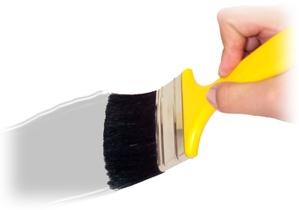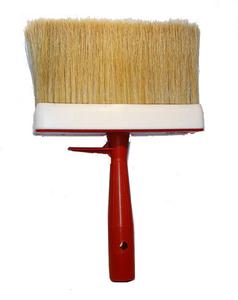
Painting with a brush allows a perfectly smooth surface to be obtained without the orange peel effect of the roller.
It is also possible to reach more or less easily the hidden edges, such as the spaces behind the radiators or the corners that are tight above the shutter boxes.
Remember that there are many types of brushes (those with curved handles for radiators, rounds, etc. ..) but that will certainly be indispensable a brush (brush) for the extended surfaces and a smaller brush for the most points; unreachable or where greater precision is required.

Phases of brush whitening:
- Start from the inner corners by slightly bending the bristles of the brush.
- Remember to cross your hands, that is to say, painted by changing the painting direction (first from top to bottom, then from right to left)
- Painted in overlapping passes to even out the color.
- If you have to paint difficult surfaces such as plaster rosettes or frames, remember to use the brush by tapping the surface.
"Wring" the brush
To eliminate the excess paint on the brush you can wring the edge of the tin or even better, stretch a piece of wire between the attachments of the tin handle and use it to "squeeze" the brush.
Also remember to never leave the brush resting on the bristles, as it could be damaged, but hung or placed on its side.